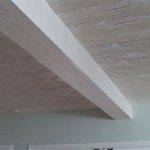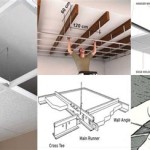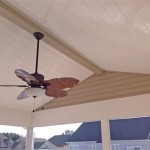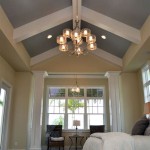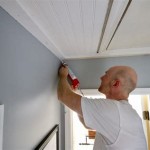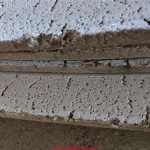How To Cut Crown Moulding For A Sloped Ceiling In Revit
Crown molding adds a touch of elegance and sophistication to interior spaces. However, installing crown molding on a sloped ceiling presents unique challenges, particularly when utilizing Building Information Modeling (BIM) software like Revit. This article provides a detailed guide on how to accurately cut crown molding for sloped ceilings within the Revit environment, ensuring a seamless and professional finish. The process involves understanding the angles and geometry involved, creating custom profiles, and employing various Revit tools to model and visualize the installation effectively.
Successfully integrating crown molding with sloped ceilings in Revit requires a blend of architectural knowledge, technical proficiency in the software, and a keen eye for detail. Without precise measurements and meticulous modeling, the final result can appear disjointed and unprofessional. The following methodology offers a structured approach to tackle this task.
1. Determining the Ceiling Slope and Corresponding Angles
The initial step involves accurately determining the slope of the ceiling. This measurement is critical for calculating the correct miter and bevel angles required for cutting the crown molding. In Revit, the slope can be readily identified using the "Spot Slope" annotation tool. This tool allows users to click on the sloped ceiling and automatically display the slope as a ratio or an angle.
Once the ceiling slope is known, the corresponding angles for cutting the crown molding can be calculated. The complexity arises because crown molding is typically installed at an angle relative to both the wall and the ceiling. Therefore, standard miter and bevel settings won't suffice. Specific formulas are used to calculate the correct angles, taking into account the spring angle of the crown molding (the angle at which the molding sits against the wall and ceiling) and the ceiling's slope angle. These formulas are derived from trigonometric principles. While manual calculations are possible, specialized online calculators or woodworking software can significantly simplify the process. These tools accept the spring angle and ceiling slope angle as inputs and output the required miter and bevel angles.
It is important to note that the accuracy of the slope measurement directly impacts the accuracy of the calculated angles. Therefore, verifying the slope in the field, if possible, is highly recommended, particularly in older buildings where irregularities in construction may exist. Any discrepancies between the Revit model and the actual site conditions should be addressed before proceeding with the fabrication of the crown molding.
Furthermore, understanding the relationship between the miter and bevel angles is crucial. The miter angle refers to the angle at which two pieces of molding meet on a flat surface. The bevel angle, on the other hand, refers to the angle at which the blade is tilted to cut the molding along its thickness. When cutting crown molding for a sloped ceiling, both angles are typically non-zero, requiring a saw capable of compound miter cuts.
2. Creating a Custom Crown Molding Profile in Revit
Revit provides predefined profiles for various architectural elements, including moldings. However, for specific crown molding designs or to accurately represent the chosen molding profile, creating a custom profile is often necessary. This involves using Revit's profile editor to draw the cross-sectional shape of the crown molding.
To create a custom profile, navigate to "File" > "New" > "Family" and select the "Metric Profile" template. The profile editor provides a drawing environment where lines, arcs, and other drawing tools can be used to define the shape of the crown molding. It is essential to draw the profile accurately, paying close attention to dimensions and details. The profile should be drawn in its actual size, as it will be scaled according to the defined units in the Revit project. The insertion point of the profile, which determines how the molding is placed, should also be carefully considered. Typically, the insertion point is placed at the corner where the molding meets the wall and ceiling.
Once the profile is drawn, save it as a separate family file. This file can then be loaded into the Revit project and used to create sweeps or reveals. When creating the profile, consider adding parameters for dimensions that might need to be adjusted later, such as the overall height or width of the molding. Parameterized profiles allow for greater flexibility and ease of modification within the Revit project.
Furthermore, it's beneficial to assign a material to the profile within the family editor. This ensures that the crown molding will display the correct material properties in the Revit model, including its color, texture, and reflectivity. This contributes to a more realistic and visually appealing representation of the finished product.
3. Modeling the Crown Molding Using Sweeps and Voids
With the custom profile created and loaded into the Revit project, the next step is to model the crown molding along the sloped ceiling. Revit offers several methods for creating three-dimensional elements, but the "Sweep" command is most suitable for modeling continuous profiles like crown molding. The Sweep command allows users to trace a path and extrude a profile along that path, creating a solid or void form.
To use the Sweep command, navigate to the "Architecture" or "Model" tab and select "Sweep." Choose the "Pick Path" option and select the edges of the ceiling and wall where the crown molding will be installed. Ensure that the path is continuous and accurately represents the intended location of the molding. Pay close attention to the alignment of the path, especially at corners and transitions. Small inaccuracies in the path can lead to noticeable distortions in the final model.
Once the path is defined, select the custom crown molding profile from the profile library. Revit will then extrude the profile along the path, creating the three-dimensional representation of the crown molding. Adjust the orientation of the profile if necessary to ensure that it is correctly positioned relative to the wall and ceiling. Revit allows for fine-tuning of the profile's position and rotation, allowing for precise alignment.
In situations where the crown molding needs to be cut or trimmed due to openings or other architectural features, Revit's "Void" tools can be used. Void sweeps or void extrusions can be created to subtract material from the crown molding, effectively trimming it to fit the desired shape. When using voids, ensure that they intersect the crown molding element completely to achieve the desired result.
At the corners where two sections of crown molding meet on a sloped ceiling, the calculated miter and bevel angles from Step 1 are crucial. The "Cut Geometry" tool can be used to precisely trim the ends of the molding elements to create a clean and seamless joint. This involves selecting the target element (the crown molding) and then selecting the cutting element (another piece of crown molding or a reference plane). The angle of the cut should correspond to the calculated miter and bevel angles.
Finally, it is recommended to duplicate the crown molding family and create different types for different sizes or materials. This allows for easier management of the crown molding elements within the Revit project and facilitates the creation of schedules and quantity takeoffs.
Applying these steps will result in a detailed and accurate representation of crown molding integrated with a sloped ceiling in a Revit model. This improves visualization, coordination, and fabrication, reducing errors and improving the overall quality of the project.
In addition to the core steps outlined above, several advanced techniques can further enhance the accuracy and efficiency of modeling crown molding for sloped ceilings in Revit. For instance, utilizing reference planes and parameters to control the position and orientation of the crown molding profile can provide greater flexibility and control. Furthermore, exploring Revit's adaptive component capabilities can enable the creation of parametric crown molding elements that automatically adjust to varying ceiling slopes and wall conditions.
Another important consideration is the level of detail required for the model. For conceptual design phases, a simplified representation of the crown molding may suffice. However, for construction documentation and fabrication, a more detailed model is necessary, including accurate dimensions and material specifications. Adjusting the level of detail based on the project's specific requirements can optimize performance and reduce file size.
Finally, collaboration and communication are essential for successful implementation. Sharing the Revit model with other project stakeholders, such as contractors and fabricators, allows for early detection of potential issues and ensures that the crown molding is installed correctly. Clear communication of the design intent and any specific requirements will contribute to a smoother and more efficient construction process.
Solved Crown Sweep Angle On Vaulted Ceiling Autodesk Community
Solved Crown Sweep Angle On Vaulted Ceiling Autodesk Community

Ceilings In Revit Tutorial Sloped Ceiling Arc Floor Integrated

Solved Crown Sweep Angle On Vaulted Ceiling Autodesk Community

Solved Crown Sweep Angle On Vaulted Ceiling Autodesk Community

Base And Crown Molding In Revit Tutorial

Curved Ceiling Cornice Mouldings Revit Profiles Families Structuraldetails

Classical Coffered Ceiling In Revit Tutorial

Floor Wall Ceiling Trim In Revit Tutorial

Solved Create A Wall Sweep On An Angled Gable End 2024 Autodesk Community
Related Posts

